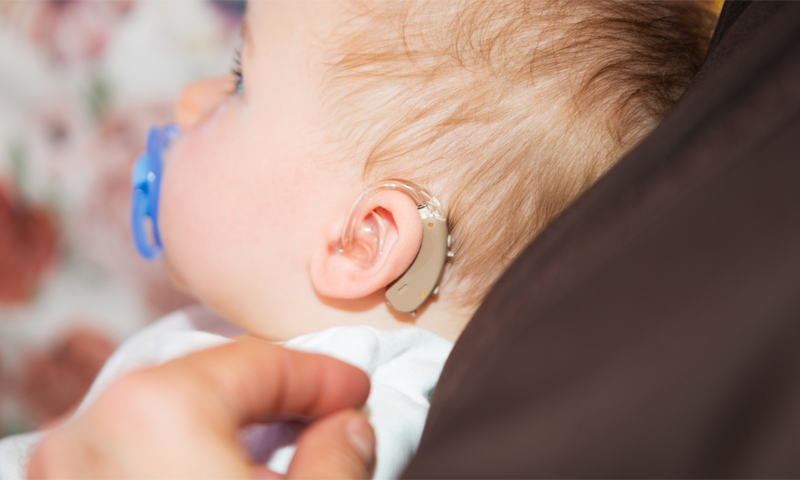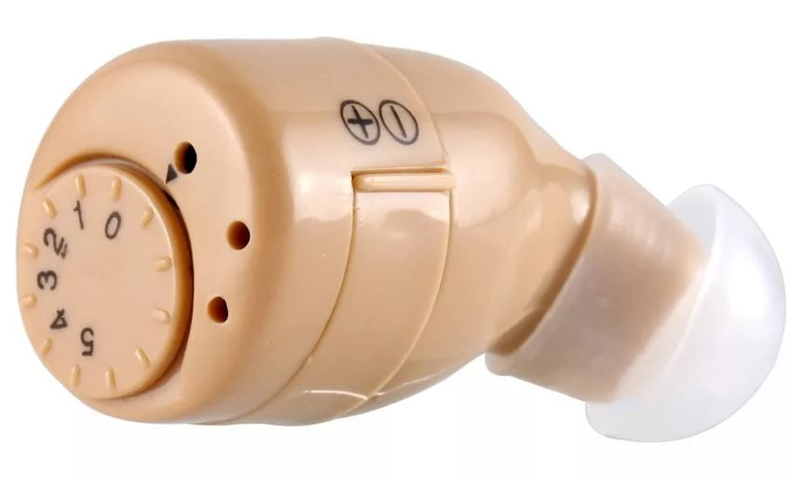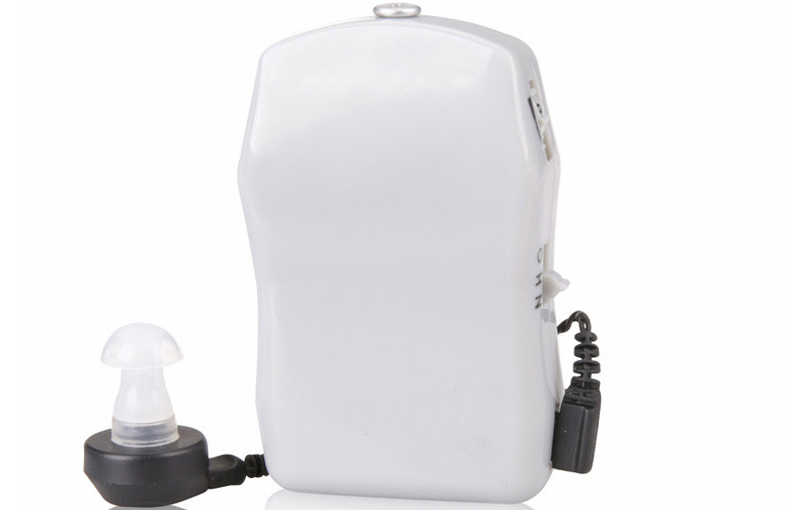The ability to hear is extremely important for normal communication and orientation in everyday life. But in the world about 10% of people who do not hear well. Such a deviation causes quite strong discomfort, causes poor health, and jeopardizes the normal functioning of a person: study, career, communication, relationships, etc. Many people get used to the idea of the irreversibility of this process, which is completely in vain. The achievements of modern technologies have made it possible for such people to optimize residual hearing with the help of hearing aids and significantly improve their quality of life. Consider what options you should pay attention to when buying such devices.

Content:
The best manufacturers of hearing aids - which company to choose
Everyone who is faced with the need to purchase a hearing aid quickly understands how difficult it is to choose a device. It is necessary to determine the manufacturer, specifications, cost, and other parameters.
Among the leading firms for the production of hearing aids should be the following companies:
- Widex
- Bernafon
- Phonak
Hearing aids of these brands are a huge success with users around the world. The main objective of these companies is to improve the quality of life of people who hear poorly, so the production of devices is aimed at intensive research, in which firms invest a significant part of their profits.
The combination of the experience of highly qualified specialists in the field of hearing aids, audiology, allowed us to develop digital systems in their functionality close to the function of a healthy ear.
To find out which models of devices can significantly improve the quality of life of a person with a hearing loss, read our best hearing aid rating.
The principle of operation and device hearing aids

Many people think that hearing aids are huge, uncomfortable devices. Thanks to the latest advances in medicine and digital technology, modern electroacoustic devices are so small that they are almost invisible to others.
The smallest appliances can be slightly larger than the coffee bean and, despite such dimensions, they are distinguished by the high quality of their work.
The hearing aid is a high-tech medical device that amplifies ambient sounds. The device is used for various hearing impairments in order to increase human communication, when other treatments are ineffective.
Modern hearing aids consist of several parts:
1. Microphone. Captures sound and converts it into electrical impulses.
2. Amplifier. Increases the power of the latter.
3. Speaker. Converts impulses into sounds that are available to the human ear.
As an additional element used chip (for programmable devices), volume controls, on and off.
The electroacoustic device is often worn in the ear canal or behind the ear. It does not restore normal hearing, but brings undoubted benefits for its user.
The main problem with these devices is background noise. But with the help of innovative developments in the field of electronics, some models are able to automatically enhance speech and suppress unwanted noise.
Types of hearing aids
BTE Instruments

Such electroacoustic devices are located behind the human ear. They represent the body in which the device itself fits, the earmold (holding the device behind the ear and conducting sound) and the connecting tube.
These models compensate for all possible degrees of hearing impairment. The volume level in such devices is changed without human intervention or manually using a special regulator.
Some devices are equipped with a remote control, which allows you to choose a listening mode that is suitable for a particular situation, some devices choose the mode of operation on their own.
Advantages:
- devices are simple and reliable in operation;
- allow you to compensate for severe hearing impairment, up to 120 dB;
- there are inexpensive and effective models;
- suitable for people with chronic otitis media;
- Do not need frequent battery replacement.
Disadvantages:
- visibility to others.
Internal devices

Such models are located in the ear and ear canal. The case of the electroacoustic device is made individually for each person.
Depending on the size, shape, placement, there are devices that compensate for hearing loss of varying degrees:
1. IIC (located deep in the ear canal, designed for use with little hearing loss);
2. CIC (located in the external auditory canal, suitable even for severe violations);
3. ITC (protruding into the auricle);
4. HS (even more protrude into the auricle);
5. FS (completely located in the auricle, they are used for severe hearing loss).
Advantages:
- invisible to others;
- almost no problems with ambient noises;
- in terms of efficiency, many models are not inferior to ear instruments;
- suitable for all age categories;
- comfortable with the active physical activity of man, because hidden in the ear.
Disadvantages:
- devices operate on small batteries that have a fairly small capacity and need to be replaced frequently;
- more often such devices are automatic, since because of the size, there is no room for additional functions (for example, a volume control);
- periodically it is necessary to change the microphone and telephone filters;
- shorter service life than behind ear models;
- There are contraindications: perforation of the eardrum, chronic otitis of the middle ear, structural features of the auricle.
Handheld devices

Such models are quite outdated. The device is a body that is located in a pocket or in another place and a speaker that fits in your ear. These elements are interconnected by a long cord.
According to the method of information processing, there are:
1. Digital models process sounds at different frequencies, loud ones decrease, and quiet ones, on the contrary, are amplified, which ensures maximum comfort for the user.
2. Analog equally amplify all sounds coming to the microphone, as a result, many are not audible enough, while others are overly amplified.
Advantages:
- ease of management: large controls that are suitable for the elderly, for people with impaired motor skills or coordination of movement;
- reliability, damage stability;
- lowest cost.
Disadvantages:
- visibility to others;
- big sizes.
Hearing Aid Selection Parameters

Selecting the type of sound processing
1. Digital devices convert the signal into a digital code, so they allow to get high-quality sound, a wide potential for personalization of each model, the use of additional accessories.
2. Analog models provide low sound quality.
Appearance
Each type (ear, ear, pocket) has its advantages and disadvantages, features and limitations for use, therefore, it is necessary to take into account both the appearance of the device and its visibility to others, and the indications for its use and the technical features of a particular product.
Ear plug
A person should not feel discomfort when wearing a earbud.Properly selected ear insert reduces the likelihood of a whistle and provides high quality sound.
Connecting tube
In the ear models, the connecting tube connects the device itself and the earmold, so it must be flexible, of optimal length.
1. If it is very short, it will interfere with the optimal placement of the liner in the ear canal, which can cause a whistling electroacoustic device.
2. If it is too long, the device will not hold well for the ear.
Sound quality
This parameter defines several basic characteristics of hearing aids:
1. compression - amplification of sounds of different intensity (modern models leave an amplified signal within the range of comfort for the user).
2. frequency range of the device (the wider the frequency band, the higher the intelligibility of speech);
3. the presence of a locator (system of directional microphones, amplifying speech);
4. number of channels (frequency range in which you can adjust the gain);
5. power (power should not only suffice for good sound reproduction, it should be in stock, which will compensate for hearing impairment in case of complications);
6. noise reduction systems, feedback, smoothing sharp sound, etc.
The size of the external auditory canal
With a narrow passage - even the smallest device can be visible to others. In addition, if it is necessary to compensate for severe hearing loss, miniature devices are not in all cases capable of providing high sound quality.
Cost of
The price of the device directly depends on its power, the complexity of the computer chip, and other technical features of the particular device.
Service maintenance
When buying, be sure to clarify whether there is a possibility of repair in case of damage to the device. Many well-known manufacturers provide a 2 year warranty on their products.
Additional functions
Some devices allow you to independently switch operating modes, adjust the volume, and other features in order to maximally adapt to the environment. Control can occur using the remote control or switches on the case.
Which hearing aid to choose

1. Choosing the type of hearing aid, you should opt for digital models, because they produce better sound than analog ones.
2. As for the appearance, the in-the-ear models are perfect for people who want to hide the presence of a hearing aid as much as possible. In addition to the requirements for the appearance of the device, the choice should be based on the degree of hearing impairment. Unfortunately, the in-ear devices are not able to compensate for very severe hearing impairments, so you should look at the ear devices.
3. If the question of appearance is not a matter of principle, you can purchase an ear tool. In addition, this model does not require constant care, so it is also recommended for the elderly.
How much does a hearing aid cost?

1. The cost of models with minimal functionality that satisfy the basic human needs: 6000-17000 p.
2. The cost of the most popular models with advanced functionality (noise reduction, locator, 4-6 compression channels): 17000-29000 p.
3. The cost of automatic devices that independently change the operating parameters depending on the sound environment: 29000-52000 p.
4. The cost of devices with the maximum range of functions, with high sound quality: up to 120000 p.
It will be interesting to friends too






